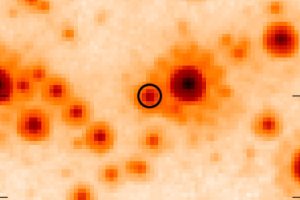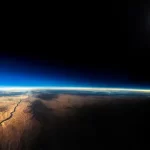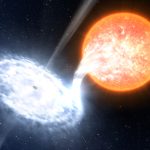Key takeaways:
- Researchers at UC Berkeley identify a potentially free-floating black hole through gravitational microlensing, marking a significant milestone in astronomical research.
- Determining the mass of the compact object remains a challenge, with estimates ranging between that of a neutron star and a black hole, highlighting the complexity of stellar remnants.
- The discovery sheds light on the prevalence of compact objects in the Milky Way, aiding in understanding stellar evolution and potentially revealing clues about the universe’s early history.
- Competing analyses by different research teams underscore the nuances of astrophysical data interpretation, highlighting the need for continued collaboration and refinement of models.
- Further observations, including additional astrometric data from Hubble, are anticipated to provide clarity on the nature of the discovered object, driving continued investigation into cosmic phenomena.

If, as scientists speculate, the demise of massive stars results in the formation of black holes, then the Milky Way galaxy should be teeming with hundreds of millions of these enigmatic entities. However, the challenge lies in detecting solitary black holes, which remain concealed from direct observation.
Recently, a team of astronomers led by researchers from the University of California, Berkeley, made a groundbreaking discovery. They potentially identified a free-floating black hole for the first time using a phenomenon known as gravitational microlensing. This discovery occurred when the team observed a distant star brightening as its light was distorted by the powerful gravitational field of an unseen object.
Casey Lam, a graduate student, and Jessica Lu, an associate professor of astronomy at UC Berkeley, spearheaded the research. Their findings suggest that the mass of this invisible compact object ranges between 1.6 and 4.4 times that of the sun. However, caution is warranted as the object could also be a neutron star, given that astronomers believe remnants of dead stars with masses exceeding 2.2 solar masses collapse into either black holes or neutron stars. Neutron stars, although dense and compact like black holes, resist further collapse due to internal neutron pressure.
Regardless of whether it’s a black hole or a neutron star, this discovery marks the first instance of a dark stellar remnant, akin to a stellar “ghost,” found drifting through the galaxy without a stellar companion.
“This discovery represents the first instance of detecting a free-floating black hole or neutron star using gravitational microlensing,” stated Lu. “Through microlensing, we gain insight into these solitary, compact objects, which remain invisible through other means.”
Understanding the prevalence of such compact objects within the Milky Way galaxy holds significance for unraveling the mysteries surrounding stellar evolution, particularly the processes of stellar death, and shedding light on the evolution of our galaxy. Additionally, it may provide clues about the existence of primordial black holes, hypothesized to have formed in abundance during the early stages of the universe.
The research, led by Lam and Lu, along with their international collaborators, has been accepted for publication in The Astrophysical Journal Letters. Their analysis includes several other microlensing events, although they determined that these were not caused by black holes. However, two of these events likely originated from either a white dwarf or a neutron star. Moreover, the team estimated the galaxy’s black hole population to be around 200 million, aligning closely with theoretical predictions.
Same data, different conclusions
Interestingly, another research team from the Space Telescope Science Institute (STScI) in Baltimore conducted a parallel analysis of the same microlensing event. They argue that the compact object’s mass is closer to 7.1 solar masses, unequivocally identifying it as a black hole. Their findings will also be published in The Astrophysical Journal.
Both teams utilized data from two microlensing surveys: the Optical Gravitational Lensing Experiment (OGLE) and the Microlensing Observations in Astrophysics (MOA), supplemented by astrometric data from NASA’s Hubble Space Telescope. The object in question bears the designations MOA-2011-BLG-191 and OGLE-2011-BLG-0462 (OB110462).
While microlensing surveys detect approximately 2,000 stars brightened by microlensing annually within the Milky Way, the addition of astrometric data enabled the determination of the compact object’s mass and distance from Earth. The UC Berkeley-led team estimated its distance to be between 2,280 and 6,260 light years, whereas the STScI team placed it at about 5,153 light years away.
Looking for a needle in a haystack

Lu and Lam’s interest in this object was piqued in 2020 when the STScI team questioned whether certain microlensing events were caused by compact objects. Lu, who has been studying free-floating black holes since 2008, recognized the potential of this data to refine estimates regarding their prevalence in the galaxy.
Lam’s analysis of the microlensing events revealed that one event, OB110462, exhibited characteristics consistent with a compact object. The extended duration of stellar brightening, lasting nearly 300 days, was particularly noteworthy. Lam’s previous research had indicated that long-duration events are more likely to involve black holes, suggesting that such events offer a promising avenue for black hole detection.
Further observations using Hubble confirmed the enduring gravitational influence of OB110462 on the background star’s light. Additional data, scheduled for collection in 2022, is anticipated to provide further clarity regarding the nature of this enigmatic object.

The differing conclusions reached by the two research teams stem from disparities in their analyses of astrometric and photometric data. Lu and Lam’s team refrains from definitively categorizing the object as a black hole, acknowledging the possibility of alternative explanations, including a neutron star.
The discrepancy underscores the need for comprehensive analysis and underscores the complexity of interpreting astrophysical data. Both teams remain committed to refining their models and await additional data to elucidate the true nature of this intriguing cosmic phenomenon.


